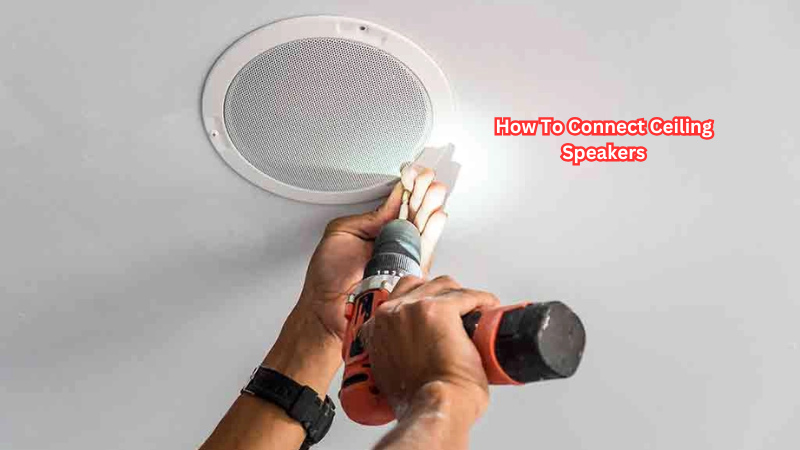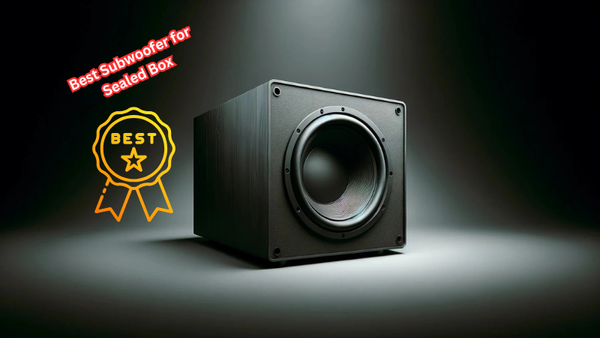When creating a home entertainment system, installing ceiling speakers can be a great addition. Not only do they provide high-quality sound, but they also save space and create a sleek aesthetic in any room.
However, the installation process may seem daunting to those unfamiliar with electronics and wiring. In this guide, we will take you through the steps of connecting your ceiling speakers to ensure you have the best sound possible for your home.
Why Choose Ceiling Speakers
Ceiling speakers have several advantages over traditional floor or wall-mounted speakers. One of the main benefits is their space-saving design, as they are mounted flush to the ceiling and do not take up any additional floor or shelf space. This makes them a great option for smaller rooms or spaces where floor space is limited.
Another advantage is their ability to provide a more immersive sound experience. By being installed overhead, ceiling speakers can distribute sound evenly throughout the room, creating a surround sound effect that is perfect for watching movies or listening to music.
Plus, with advancements in technology, ceiling speakers now come in a variety of sizes and styles to match any home decor, making them a versatile choice for any room.
Steps for Connecting Ceiling Speakers
Now that you know the benefits of ceiling speakers, let's dive into how to connect them.
Plan and Prepare
Before beginning the installation, gather all necessary tools and materials, such as a stud finder, wire cutter, drill, and speaker wire.
Determine the best location for your speakers by considering factors like room layout and furniture placement. Use the stud finder to check for any obstructions that might interfere with the installation.
Make a detailed plan of where each speaker will be placed for optimal sound distribution. It’s crucial to ensure you have enough speaker wire to connect the speakers to the amplifier.
Cut Speaker Holes
Once you've planned the speaker placement, it's time to cut the necessary holes in the ceiling. Carefully measure the speaker's diameter and outline it on the ceiling using a pencil. Double-check the outline to ensure accuracy before cutting.
Use a keyhole saw or drywall saw to cut along your outline, taking care not to damage any hidden pipes or wires. Smooth out the edges of the hole if necessary. This step is crucial for a snug fit that preserves the speaker's acoustic performance.
Run Speaker Wire
With the holes cut, the next step is running the speaker wire. Determine the route the speaker wires will take from the amplifier to the speaker locations.
Use a wire snake or fish tape to pull the wire through the ceiling, being cautious to avoid damage to existing wiring or plumbing.
Secure the wire in place with clips or staples as needed, allowing for some slack. Label each wire end to ensure the correct connection at the amplifier and speaker terminals.
Connect Speakers to Amplifier
With the wires in place, it's time to connect the speakers to the amplifier. Strip the insulation from the ends of each speaker wire to expose the metal conductors.
Insert the corresponding speaker wires into the terminals on the back of each ceiling speaker, ensuring correct polarity (positive to positive, negative to negative).
Then, connect the other end of the wires to the amplifier outputs designated for each speaker. Ensure all connections are secure to prevent any interruptions in sound.
Test and Fine-Tune Sound
Finally, test the speakers to ensure they're functioning correctly. Turn on the amplifier and play audio through the speakers, listening for any irregularities like buzzing or distortion.
Make any necessary adjustments to the speaker placement or settings on the amplifier to improve audio quality. Walk around the room to verify that sound is distributed evenly.
Once satisfied with the sound quality, conceal any visible wires and ensure everything is properly secured. This ensures an immersive audio experience in your home.
So these are the steps for connecting ceiling speakers. With a little planning and patience, you can enjoy high-quality sound in your home without cluttering up your space. Make sure to regularly clean and maintain your speakers to keep them performing at their best.
Can I Install Ceiling Speakers Myself?
While the steps for connecting ceiling speakers may seem straightforward, it's essential to have some knowledge of wiring and electronics. If you're not confident in your abilities, it's best to hire a professional installer.
Installing ceiling speakers involves working with electricity, which can be dangerous if you don't know what you're doing. Additionally, any mistakes during installation can result in poor sound quality or even damage to your home's electrical system.
Plus, professional installers have the experience and tools to ensure a seamless and efficient installation process. They can also provide valuable advice on speaker placement and optimizing sound quality in your home.
So if you're not confident in your abilities or want to ensure the best sound for your home, it's worth investing in professional installation services.
Does the Type of Ceiling Affect Speaker Installation?
Yes, the type of ceiling can significantly impact the installation of ceiling speakers. For example, conventional drywall ceilings are relatively easy to work with because they allow straightforward cutting and support for speaker mounts.
However, ceilings made from materials like plaster or concrete can be more challenging, requiring specialized tools for cutting and possibly additional support structures to hold the weight of the speakers securely. In drop ceilings, common in commercial buildings, installation involves maneuvering around ceiling tiles and ensuring that the speaker weight doesn't affect the tile’s integrity.
Furthermore, the ceiling’s height can also influence sound distribution, with higher ceilings potentially requiring more powerful speakers or additional units to achieve optimal sound coverage. Considering these factors, careful planning and possibly professional assistance are essential, especially for non-standard ceiling types, to ensure both structural integrity and high-quality sound.
Tips for Choosing the Right Ceiling Speakers
When selecting ceiling speakers, it's essential to consider factors like sound quality, speaker size, and compatibility with your current audio system. Here are some tips to guide you in choosing the right ceiling speakers for your needs:
- Consider the room size: Larger rooms may require more powerful speakers or additional units for optimal sound distribution. Also, consider the room's layout and any potential obstructions that may affect sound quality.
- Choose speakers with good frequency response: Frequency response refers to the range of audio frequencies a speaker can reproduce. Speakers with a broader frequency range can produce more accurate and detailed sound.
- Look for reputable brands: Investing in quality speakers from well-known brands can ensure better sound performance and durability.
- Check compatibility with your audio system: Ensure that the ceiling speakers you choose are compatible with your current audio system or amplifier. Double-check things like impedance, power handling, and connection options to avoid any issues during installation.
- Consider moisture resistance: If installing speakers in areas like bathrooms or outdoor patios, opt for moisture-resistant speakers to prevent damage from humidity or water exposure.
By keeping these tips in mind, you can select ceiling speakers that not only fit your budget but also provide the best sound experience for your home. With proper installation and maintenance, they can enhance the ambiance of any room and elevate your audio entertainment.
FAQs
Are ceiling speakers suitable for all types of audio systems?
Yes, as long as they are compatible with the power and impedance requirements of your audio system.
Can I install ceiling speakers in any room?
Ceiling speakers can be installed in most rooms, but it's essential to consider factors like moisture levels and ceiling type before installation.
How many ceiling speakers do I need for optimal sound distribution?
The number of ceiling speakers needed depends on factors like room size and layout. It's best to consult a professional installer for a customized recommendation based on your specific needs. So if you're looking to upgrade your home audio system, consider installing ceiling speakers for a sleek and immersive experience.
Conclusion
Ceiling speakers offer a sleek and space-saving way to achieve high-quality sound in your home. With proper installation, they can provide an immersive audio experience for music, movies, and more.
Just remember to plan carefully, follow the correct wiring process, and consider professional assistance if needed.
And with the right ceiling speakers chosen for your specific needs, you can enjoy superior sound quality for years to come. So go ahead and elevate your home's audio game with ceiling speakers!





